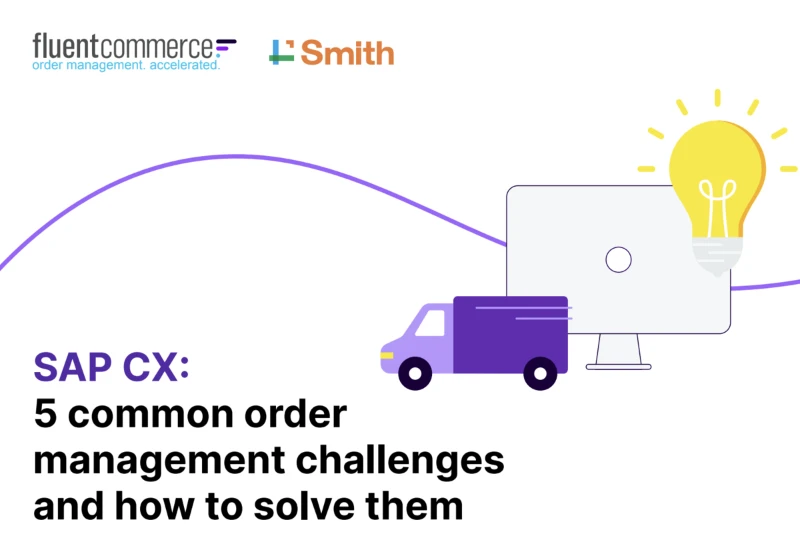5 common order management system challenges and how to solve them
Published on 10 Jul 2023

What is the hardest thing about taking online orders for you? Like many online sellers, you likely handle orders using SAP CX. At first, most online businesses can get by with simple jobs like split shipments and help with sourcing strategies. However, as your business gets bigger and more complicated, so do the challenges with managing online orders. It's no longer enough to just split orders. You need a robust order management system that provides more control over when and how they are split and handled, among other things, to maximize order fulfillment and profit margins on each order.
An efficient order management system can streamline your order processing, optimize inventory management, and enhance customer satisfaction by ensuring timely deliveries and accurate order fulfillment. As your business scales, investing in a comprehensive order management system becomes imperative to maintain operational efficiency and meet the growing demands of your customer base. With the right order management system in place, you can overcome the complexities associated with managing online orders and focus on growing your business with confidence.
For example, if your business grows by buying other companies, it might be hard to see all of the inventory in all of the departments at once and get orders to the right place. Dealing with stock that isn't physically there and making promises based on the stock that will be there in the future is another problem. As your business grows, it's important to be able to handle new, more complex order-handling scenarios. So, let's look at five of the most common problems with managing orders online and see how a dedicated spread order management system can help.
1. Inventory access in real time
It is very important to keep correct inventory information. When your merchandise is out of sync, two bad things can happen: either you don't sell enough because you're "out of stock," or you sell too much and have to cancel orders. In neither case does the customer have the kind of experience that makes them want to buy again and stay loyal to the brand. Rough Stock Indicators (RSIs) are no longer enough; you need to know exactly how much stuff is available.
2. Process management by hand
Order processing needs to go faster, and depending on manual processes is a big problem. Fraud checks, credit checks, and services that add value that happens outside of the system can cause delays and mistakes. Commerce platforms and ERPs aren't made to handle the full order lifecycle workflow. Because of this, it's essential to implement an efficient order management system that lets you send notifications and trigger events in other systems at any point in the order process. By integrating an advanced order management system, you can streamline the order lifecycle and reduce processing time significantly. The system allows you to obtain real-time information from other systems, enabling faster fraud checks, credit verifications, and value-added services, resulting in a smoother and more accurate order processing experience. Fluent Order Management is designed to address these challenges effectively, providing seamless integration with various systems and enhancing overall order processing efficiency. With Fluent Order Management, you can eliminate manual bottlenecks, minimize delays, and optimize the entire order workflow, ultimately improving customer satisfaction and driving business growth.
3. Sources chosen in advance
Even though SAP CX has basic sourcing features like splitting shipments or making sure that customers get shipments from close locations, it may not be enough for businesses with a lot of shipping points. As the number of shipping locations goes up, the optimal sourcing method gets more complicated and opens up more ways to improve it.
4. Handling backorders and pre-orders
When it comes to backorders and pre-orders, there are four main problems to solve. Fluent Order Management is an option because it lets you keep track of incoming inventory and make promises based on that. You can also make your inventory statuses, which can be used in the fulfillment logic. This gives you more control over how much stock goes to each sale.
5. Streamlining returns
Businesses can have a lot of trouble with returns. Still, you can handle the cost of returns well if you have full control over the process of reverse logistics. Fluent Order Management lets you make and change rules to handle returns more efficiently, making the process easier and cheaper.
Download fluent commerce's whitepaper to learn more about 5 common order management challenges and how to solve them only on Whitepapers Online.
